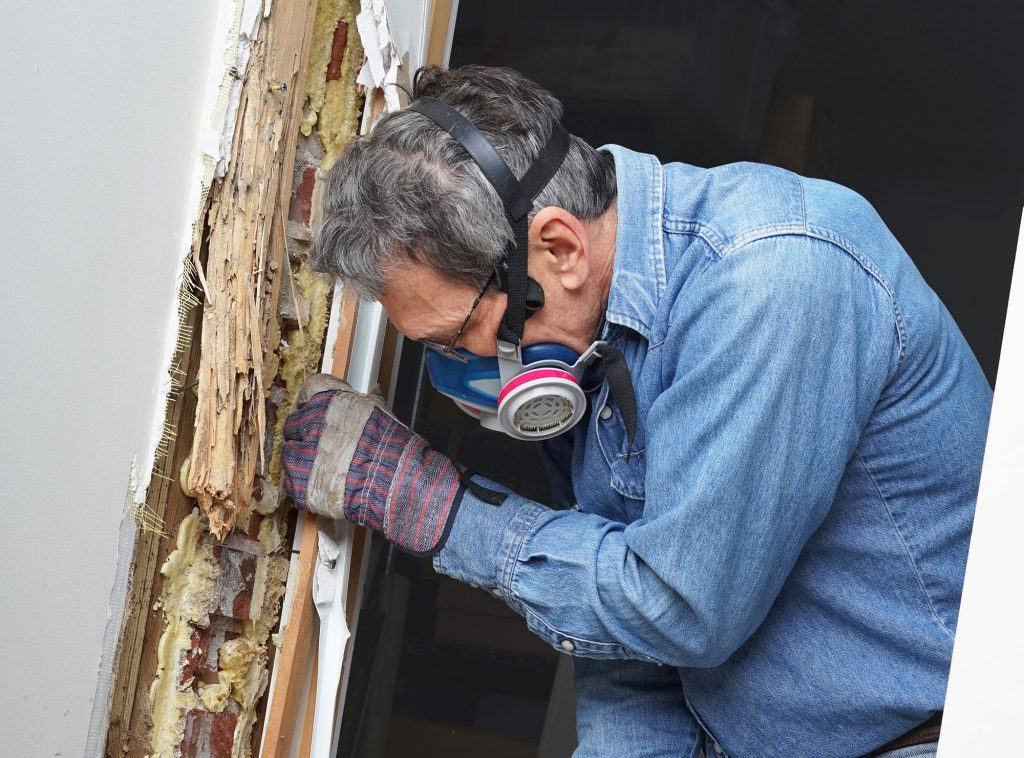The dangers brought by Asbestos dust and fibres continue to strike fear upon renovators and homeowners. As such it should be dealt with the upmost care.
Asbestos is a naturally occurring silicate mineral fibre which can be used for cement sheeting, roofing, coating and insulation etc:
If sealed, undisturbed and maintained in good condition, materials with asbestos are generally safe. However, once disturbed, the fibres released may cause health hazards if inhaled, such as asbestosis, lung cancer and mesothelioma.
Until it was classified as hazardous in 1987, asbestos was widely used in building materials due to its resistance to heat, erosion and decay, as well as fire and water.
In 2003, materials containing asbestos were nationally banned across Australia.
Despite the decades-long ban, domestic exposure continues to be among the main drivers of the increasing number of Australians inflicted with asbestos-related disorder.
In 2018, the Medical Journal of Australia found that 600 people in the country are diagnosed with mesothelioma annually.
Up to now, many homeowners are still exposed to asbestos, particularly when they decide to renovate old homes.
How can you manage the risk and protect yourself from asbestos-related diseases?

Removal process
In general, any home built or renovated before 1987 may still have asbestos, which is why homeowners looking to renovate old homes are advised to engage licensed asbestos removalists to remove and dispose of asbestos properly.
As per the Code of Practice on how to safely remove asbestos, an approved code of practice under section 274 of the Work Health and Safety (WHS) Act, there are three classifications of professionals who can legally remove asbestos, namely:
- Class A: They can remove any amount of asbestos, both asbestos containing materials and asbestos-contaminated dust or debris.
- Class B: They can remove any amount of non-friable asbestos as well as asbestos-contaminated dust or debris associated with the removal of non-friable asbestos.
- No license required: They can remove up to 10m2 of non-friable asbestos, asbestos-contaminated dust or debris associated with the removal of less than 10m2 of non-friable asbestos and other minor contamination.
Professionals are obliged to indicate asbestos removal areas and set up barricades and warning signs, identify work hazards and control measures, determine the electrical equipment needed and the method to be used (wet or dry), provide personal protective gears and lead decontamination of workers and work area.
If no major renovation projects are planned, homeowners are advised to regularly look out for asbestos hazards around the home, including flaking paint, peeling eaves, guttering and downpipes, broken cement sheeting and unsealed sheeting.
Once they have identified hazards, avoid removing, cutting, drilling, scraping or washing without the presence of professionals to prevent any release of asbestos dust or fibres.
Homeowners may also buy a DIY Asbestos Test Kit to take a sample and send it to a laboratory for testing before ultimately hiring a removal team.
For an effective treatment, homeowners to plan the job in advance together with licensed professionals.
Consequently, prepare your equipment and the work area before starting the removal and cover the area with a 200um plastic drop sheet to avoid the spreading of fibres.
Avoid windy conditions to further secure the people in the work area.
All workers are advised to wear disposable clothes and a Personal Protective Gear. Personal Protective Gear including coveralls, shoe covers, gloves, masks and eyewear’s, need to be disposed of after the job as part of the decontamination process.
Allocate enough time for the job and never leave until the work and decontamination are completed.
Finally, dispose of all asbestos waste safely and legally with the help of professionals.
To learn more about Asbestos please visit www.asbestossafety.gov.au or www.epa.nsw.gov.au
